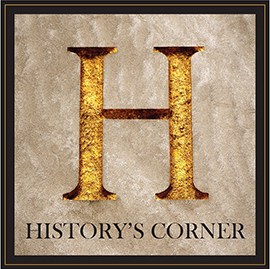Mt Vernon Glassworks Project
16 October 2016
Dear FOHBC Members: Please consider opening your investigative mind and wallets for this tremendously important historical project. Full information and progress reports can be found at FOHBC.org.
Mt Vernon Glassworks Archeology
Hi Ferdinand, Mark Yates and I were excavating behind the factory site of the Mt. Vernon glassworks with Brian Wolff for several years prior to his death. Brian’s dream was to excavate the actual factory site. Brian’s longtime friend, turns out, had recently inherited a house, its yard being the factory site. Last October we got permission to excavate on the factory mound in the backyard and Brian was able to be with me on the first day there. Mark and I continued until December 31st when the frost did us in.
Mark and I have been digging there all of 2016. The owner has been most accommodating and is very interested in what we are doing and wants it to continue. He now has health and financial problems and has informed me several weeks ago he is planning to list the property for sale this fall. This listing will shut down the project, probably forever.
After discussion with him he offered to lease us the yard for 2017 for $5,000 (new negotiations push the lease to 2-months with options at $10,000) with the possibility of extending the lease. This will enable him to continue to stay in the house, also it will give us much greater access to the one acre site then we have had before. We were thinking that possibly the Federation would be interested in contributing to the project so we can continue this important research. Mark and I will contribute our time and materials and the expense of my employees to expedite the project.
I have attached a summary of what we have done and are hoping to be able to do. Also, there is the 2015 report, the grant application to Corning Museum of Glass (CMOG) from this spring (see on right), our glass attribution policy and my resume. I will send another email with some photos.
Thank you for your consideration,
Richard Strunk
Description of Project
Brian Wolff, a local resident, had researched the Mt. Vernon Glassworks for over 20 years and located the factory site. About five years ago, two friends of Brian, Mark Yates and Richard Strunk, joined Brian in his research. They have accumulated a considerable amount of primary source documentation including deeds, maps, invoices and advertisements.
The owner of the site had lived there since 1946 and did not significantly disturb the structural remains of the factory or furnace. She died four years ago, leaving the property to a close friend of Brian’s.
Brian became seriously ill during 2015, but before he passed away in December, Mark and Richard obtained exclusive permission to excavate the site. Brian’s goal was to write the definitive publication on the history and output of the glassworks.
The new owner is planning to list the house for sale this fall, thus time is of the essence to conduct the exploration of the site. The edge of the main furnace and a subsidiary oven structure were discovered at the end of December, 2015. Half of the furnace base is under a chicken coop that the pair has permission to excavate under. The entire furnace structure will be excavated to standard procedures and will be properly documented so it can be compared to other glass furnaces.
This site is significant as the factory closing in 1846 precluded late-19th century technological alterations that can obscure the earlier construction details. The glass found will create a baseline of characteristics typical of Mt. Vernon.
Mark and Richard have developed criteria for the proper attribution of unknown and previously mis-identified items. They have already conclusively documented that Mt. Vernon made pressed glass in clear and exotic colors by 1828, validating Harry Hall White’s findings. Also, they manufactured the earliest glass pin-type telegraph insulator (designed by Ezra Cornell) in the US.
A team was assembled to conduct this project. Richard Strunk is the principal investigator. He owns Windy Hill Restorations LLC, that has been providing lab space and payroll for two employees to speed up the project as the site is under the threat of being sold. Mark Yates is a longtime local collector and has spent years researching the glassworks. Sherrie-Stevens Wolff, Brian’s widow, will contribute Brian’s research and shards and is a longtime friend of the landowner and an interested volunteer. Professor Joseph Diamond will act as an advisor and draftsman. The landowner has been most accommodating to our research as his yard is being excavated.
Their conclusions will integrate information from archeology, primary source historical research and the glass collector knowledge base.
Progress since October 2015
Research
Obtained access to 100 invoices from the late 1820s. Photographed and transcribed all of them. Obtained Brian Wolff’s shards. Have a verified date of spring of 1846 when they closed up and moved to Mt Pleasant. Been studying the molds to determine manufacturing methods. Have discovered that the term ‘blowpipe pontil’ is factually inaccurate.
Excavation
Excavated 75 one meter square units to subsoil. Uncovered: Furnace structure, Stone pier wall, Foundation walls, Air duct trench with stone entrance, Original well, Brick walkway, two potash kilns.
Remote Sensing
Rented ground penetrating radar machine and did the initial survey of the entire yard. Found evidence of two unknown outbuildings and the original well.
Recoveries and Current Conclusions
Factory Parts Recovered: Blowpipes, Three wood blocks used for initial shaping of the parison, Annealing pan, Furnace doors, Crucible parts, Crucible covers, Odd furnace components, Annealing oven components.
They made glass in: Clear, olive, emerald and lime green, cobalt blue, dark and light purple, opalescent and some yellow amber that is like Stoddard (rarely).
Glass items found onsite
Utilities including: Chestnuts (they have an identifiable lip finish), Cylinder medicines, Rectangular medicines, snuffs, blackings, Umbrella inks including an unknown embossed one. Most of the utilities have identifiable mold markings that are unique to Mt Vernon.
Flasks including: GV-5 RR, GIII-11 Cornucopia, GVIII-1 or 2 sunburst (not definite yet) most likely #2, GII-88 & 89 Lafayette in various greens and also clear which is unknown, GVII-1 & 2 Tippecanoe in green, also aqua and clear which is unknown.
Pressed glass clear and colored (by 1829) including: MV-1 salts, the other MV salts were not made there, An unknown “Eagle” salt, Tumblers, Sunburst stoppers, no 3-mold ones have been encountered, Claw foot lamps, Butter pats, Nappies, other unidentified patterned plates.
BTM including: GIII-2 Type 1 only, not the named ones, GI-30, GI-41 castor, an un-identified castor bottle in light green, 5 ring and 7 ring annular inks, GII-18 inks in an odd and rare mold and also in clear. They did not make the GII-15 or the GI-29 Carafes.
Pattern molded items: Found a Pitkin flask there. Other unidentified items.
Insulators: Threadless “bureau knob” CD 780 which is the first glass insulator in the United States. Found them in two-plus different molds and in clear and green which are unknown colors. Possibly an unknown threadless in clear (just found last week).
Tableware includes: Wine glasses, Decanters, Freeblown tumblers, “Ships tumblers” (resemble a pilsner glass), items with rigaree decoration.
Freeblown items include: Pitchers, Hats, Balls, Ointment jars, Large jars.
Medicine bottles: Have identified 30+ different ones that were made there. Have approximately 20 medicine bottles that are still unidentified, most of them are bottles that there is no known example.
They also made: Several Saratogas but not Lynch & Clarke’s. An unknown early variant of Tweddles soda. Two seal bottles that have previously unknown initials.
What we want to do
Uncover entire furnace structure. Uncover entire stone pier wall. Explore the two outbuilding foundations that were found with the GPR survey. Locate and excavate the privy.
Redo the GPR survey with a different machine to make an accurate map of features. This will also uncover shallow features we know have glass in them that were not discernible with the machine we had.
The domain Mtvernonglassworks.org has been purchased so we can post our findings online. Also giving and educational seminar and display at the FOHBC 2017 Springfield National Antique Bottle Convention & Expo.
The situation
Our current free deal with landowner has expired as he will list the house for sale. He has been most accommodating in our excavations and is personally interested in our research. As his grandchildren were often visiting him, we were not able to leave open large areas to uncover the entire furnace or the pier wall. We were also confined to only a small area behind the barn
Landowner has proposed a 1 year lease (till 12/31/2017) on the yard for $5,000. This can be extended for another year if desired. He will continue to occupy the house which gives the site security. We will have unlimited access to the entire yard and can excavate and keep open large areas with fencing.





















Leave a Reply
You must be logged in to post a comment.